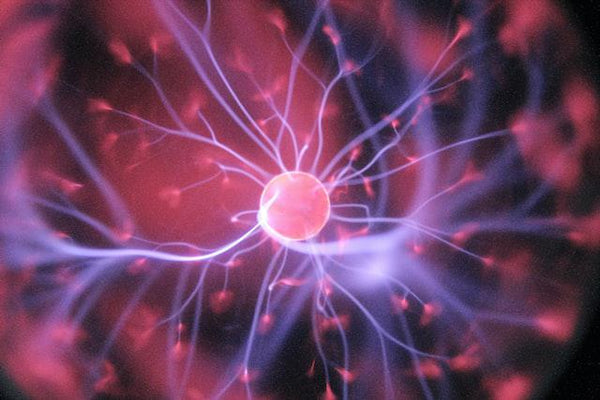Tout savoir sur l’utérus didelphe
1 février 2023

L’utérus didelphe désigne une malformation congénitale rare qui touche 0,3 % des femmes. Lorsqu’elle se montre asymptomatique, cette anomalie utérine passe souvent inaperçue. En effet, elle reste difficilement décelable durant un examen gynécologique de suivi. Mais qu’est-ce qu’un utérus didelphe ? Et quels risques peut-il présenter pour la santé et la grossesse ? Faisons le point sur ces questions.
Qu’est-ce qu’un utérus didelphe ?
Avant de se concentrer sur le cas de l’utérus didelphe, rappelons quelques notions générales sur l’utérus. L’utérus correspond à un organe musculaire creux de l’appareil génital féminin. Localisé entre le rectum et la vessie, il accueille l’œuf fécondé, le protège durant toute la gestation et l’expulse lorsqu’il parvient à maturité.
Cette matrice est constituée de plusieurs parties : le col, le corps et le fond utérins. Ses parois sont tapissées de trois couches distinctes : l’endomètre (muqueuse utérine), le myomètre (couche musculeuse interne) et le périmétrium (couche séreuse externe).
Chaque femme présente une morphologie utérine qui lui est propre. Les professionnels de santé distinguent ainsi différentes formes d’utérus (droit, antéversé ou rétroversé), qui demeurent tout à fait normales.
Il arrive toutefois que certaines patientes souffrent d’une malformation matricielle. Dans 5 % des cas, il s’agit d’un utérus didelphe (utérus didelphys). Cette anomalie congénitale, également appelée « utérus double » ou encore « didelphie utérine », engendre la présence de deux cavités utérines indépendantes chez les femmes qui en sont atteintes.
Fréquemment confondu avec l’utérus bicorne, l’utérus didelphe se divise en deux sous-types :
- Didelphe bicervical (deux vagins, deux cols et deux cavités utérines) ;
- Didelphe unicervical (un vagin, un col et deux cavités utérines).
Quelles sont les causes de malformation en utérus didelphe ?
L’utérus se forme lors de l’organogénèse, à partir de la 7e semaine de grossesse. La matrice d’un bébé de sexe féminin se développe normalement en trois étapes :
- Entre la 6e et la 9e semaine, les canaux de Müller migrent en direction du sinus uro-génital ;
- De la 9e à la 13e semaine, la partie inférieure de ces canaux fusionne. Cette phase permet la création des deux tiers supérieurs du vagin et de la cavité de l’utérus, qui se trouve divisée par une cloison dite inter-müllérienne ;
- Entre la 13e et la 17e semaine, cette cloison se résorbe et la formation de l’utérus est terminée.
Un utérus double résulte d’une anomalie du développement embryonnaire se produisant lors de la deuxième étape de la différenciation de l’appareil génital féminin. Les canaux de Müller ne s’accolent pas, ce qui entraîne la constitution de deux cavités séparées.
Quel est l’impact d’un utérus didelphe sur la santé ?
Les femmes disposant d’un utérus didelphe ne montrent pas systématiquement des symptômes. Certaines peuvent toutefois présenter de fortes douleurs lors des menstruations et des rapports sexuels, des règles hémorragiques et des difficultés à utiliser des tampons. D’autres sont confrontées à diverses complications pendant leur grossesse.
Douleurs menstruelles ou saignements abondants
Il arrive qu’un utérus double provoque des troubles menstruels. Cette anomalie matricielle peut en effet engendrer :
- D’importantes douleurs pelviennes en période de règles (dysménorrhées ou règles douloureuses) ;
- Des saignements très abondants (règles abondantes ou ménorragies) ;
- Deux épisodes de menstruations par mois.
Difficulté à utiliser des protections hygiéniques internes
Utiliser des protections hygiéniques internes reste également difficile en cas d’utérus didelphe. En effet, si votre matrice est didelphe bicervicale et que vous possédez deux vagins, l’insertion d’un tampon ou d’une coupe menstruelle se montrera compliquée et les risques de fuites seront élevés.
Nous vous conseillons donc de privilégier l’emploi de serviettes hygiéniques ou de culottes menstruelles. Ces protections périodiques demeurent idéales pour absorber le sang s’évacuant de la cavité utérine concernée par les règles.
Douleurs lors des rapports sexuels
Avoir un utérus didelphe cause parfois des douleurs plus ou moins intenses pendant les rapports sexuels (dyspareunies). Certaines femmes peuvent ressentir des douleurs localisées à l’entrée de leur(s) vagin(s) au moment de l’insertion du pénis ou des douleurs plus profondes dans toute la zone pelvienne lors de la pénétration.
Complications lors de la grossesse
Enfin, si cette malformation utérine n’altère généralement pas la fertilité, elle peut se trouver à l’origine de différentes complications durant la grossesse. Un utérus double augmente les risques de retard de croissance du fœtus, de fausse-couche, de naissance prématurée et de mauvaise position du bébé au moment de l’accouchement.
Dans des cas très rares, une gestation sur un utérus didelphe peut se caractériser par la présence de deux fœtus qui se développent indépendamment dans chaque cavité utérine. La surveillance de cette grossesse devra ainsi se montrer très rigoureuse afin de pouvoir la mener à terme.
Comment se faire diagnostiquer avec un utérus didelphe ?
Nous l’avons vu, un utérus double n’engendre pas systématiquement des symptômes. Son identification lors d’une consultation de suivi gynécologique n’est donc pas toujours chose aisée. Une femme faisant des fausses-couches à répétition ou éprouvant de vives douleurs pendant les règles par exemple se verra prescrire un examen d’imagerie médicale pour détecter une éventuelle malformation.
Dans un premier temps, une échographie pelvienne classique ou en 3D permettra d’avoir une vision globale de l’utérus et de poser un diagnostic de l’utérus didelphe. Dans un second temps, le gynécologue pourra réaliser une hystéroscopie afin d’explorer l’intérieur des cavités grâce à une petite sonde équipée d’une caméra.
En cas d’urgence, une IRM (imagerie par résonance magnétique) sera également en mesure d’identifier rapidement un utérus didelphe.
Existe-t-il un traitement pour un utérus didelphe ?
Aujourd’hui, il existe une intervention chirurgicale permettant de reconstruire un utérus double. Si ce traitement n’est pas envisageable, les patientes peuvent recourir à des méthodes naturelles pour soulager leurs symptômes.
La métroplastie de Strassman, un traitement chirurgical pour reconstruire un utérus double
La métroplastie de Strassman correspond à une intervention médicale visant à réparer un utérus didelphe. Cette opération chirurgicale consiste à réunir les deux utérus de la patiente en un seul. Il n’est toutefois pas toujours possible de la réaliser, car les deux matrices ne présentent pas forcément la même taille. En outre, elle reste le plus souvent réservée à des cas très précis.
Les méthodes naturelles pour soulager les symptômes d’une didelphie utérine
Pour apaiser certains symptômes liés à une didelphie utérine, vous pouvez vous tourner vers des remèdes naturels. Voici quelques astuces pour diminuer votre flux et atténuer les spasmes utérins :
- Buvez des tisanes à base d’achillée millefeuille (réputée pour ses vertus antispasmodiques) ou de graines de coriandre ;
- Appliquez une compresse froide sur votre bas-ventre pour resserrer les vaisseaux sanguins et réduire les saignements ;
- Consommer de l’ortie en soupe, en décoction ou mélangée dans une boisson pour diminuer l’écoulement sanguin.
Afin de prévenir l’anémie ferriprive provoquée par des règles hémorragiques, pensez également à manger des aliments riches en fer comme des légumineuses, des légumes à feuilles vertes, du jaune d’œuf ou encore de la viande rouge.
Enfin, pour soulager vos douleurs menstruelles, nous vous recommandons de placer une bouillotte sur votre ventre et le bas de votre dos. Vous pouvez aussi vous masser avec une huile végétale dans laquelle vous aurez dilué trois gouttes d’huile essentielle de basilic tropical.


Commentaires